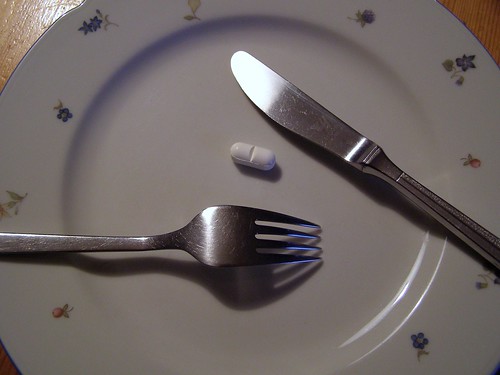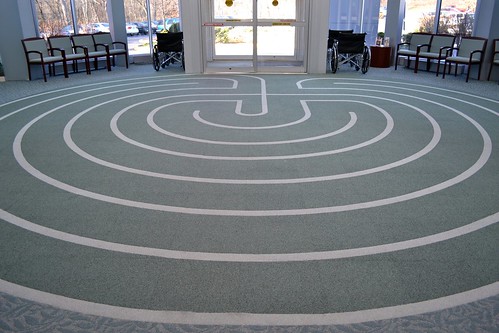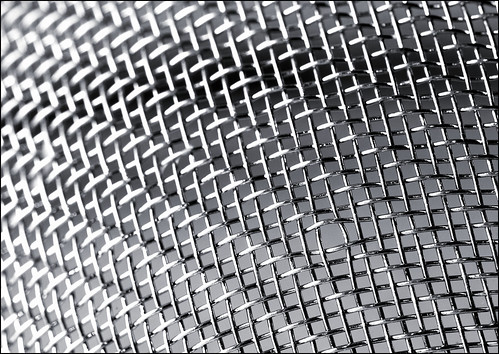 Part I of “Patient, Treat Thyself” addressed the role of self perception and self efficacy in a patient’s ability or desire to pursue self treatment. Some will call it non-compliance or non-adherence, but I would suggest that it is not just about a patient choosing to not carry out the treatment plan. It is oftentimes built into their self image and the self talk that winds its way through their day.
Part I of “Patient, Treat Thyself” addressed the role of self perception and self efficacy in a patient’s ability or desire to pursue self treatment. Some will call it non-compliance or non-adherence, but I would suggest that it is not just about a patient choosing to not carry out the treatment plan. It is oftentimes built into their self image and the self talk that winds its way through their day.
But there is another side to the coin, a significant problem faced in the clinic, the gym, and in the world around us. It’s name? The health care system itself.
 Non-compliance. Non-adherence. Call it what you will, but it is an interesting conundrum that we face on a regular basis in health and health care. Here is a common example. A clinician sees a patient with mechanical low back pain which responds favorably to exercise and postural correction. Better yet, they experience a cause-and-effect relationship between symptoms and activity on their first visit. It all makes sense to the patient, and they leave with a sense of comfort and control. They now have the tools to solve the problem. Life is good, or so it seems.
Non-compliance. Non-adherence. Call it what you will, but it is an interesting conundrum that we face on a regular basis in health and health care. Here is a common example. A clinician sees a patient with mechanical low back pain which responds favorably to exercise and postural correction. Better yet, they experience a cause-and-effect relationship between symptoms and activity on their first visit. It all makes sense to the patient, and they leave with a sense of comfort and control. They now have the tools to solve the problem. Life is good, or so it seems.
So when the same patient returns for their second visit and says, “My back still hurts. I haven’t done the exercises, nor any of the stuff you suggested”, imagine the consternation of the clinician. The answers are all there, right in front of the patient. Why do they choose to not act upon them?
 Self care always sounds like a good idea in principle – until it starts to impact your bottom line as a clinician. That may sound a little outrageous at first, but in harsh reality (and given the state of incentives in our reimbursement structure) it isn’t far from the truth. As much as health care providers espouse beliefs of “wanting the patient to become independent”, independence ultimately means no visits and no reimbursement. Clinicians straddle a fine line between these two conflicting issues of “independence” and “economic survival”.
Self care always sounds like a good idea in principle – until it starts to impact your bottom line as a clinician. That may sound a little outrageous at first, but in harsh reality (and given the state of incentives in our reimbursement structure) it isn’t far from the truth. As much as health care providers espouse beliefs of “wanting the patient to become independent”, independence ultimately means no visits and no reimbursement. Clinicians straddle a fine line between these two conflicting issues of “independence” and “economic survival”.
The issue of self care is an intriguing discussion with other clinicians. If you delve deep enough, self care is almost perceived as a threat.
The question is this: is self care a threat to traditional health care as we know it, or is it the next great disruptive innovation in health care?
 In the Industrial Age, information was scarce, expensive, institutionally-oriented, and designed for consumption. This certainly sounds like traditional health care to me. The antiquated gatekeeper model of care that accompanies it is built on paternalism, turf battles and legalized monopolies.
In the Industrial Age, information was scarce, expensive, institutionally-oriented, and designed for consumption. This certainly sounds like traditional health care to me. The antiquated gatekeeper model of care that accompanies it is built on paternalism, turf battles and legalized monopolies.
But the times are changing. Welcome to the Information Age, where information is abundant, cheap, personally-oriented, and designed for participation. It is a time when patients are more than capable of making informed decisions about not only their health care but their choice of provider as well.
Sadly, the health care system remains firmly rooted in the Industrial Age. It is time for health care to move into the Information Age, to catch up with patients and provide them with truly patient-centered care.
 It has become one of the most oft-used and perhaps most hypocritical phrases in health care: patient-centered care. This usually goes hand-in-hand with the concept of patient autonomy. These are two buzz phrases that have lost much of their true meaning.
It has become one of the most oft-used and perhaps most hypocritical phrases in health care: patient-centered care. This usually goes hand-in-hand with the concept of patient autonomy. These are two buzz phrases that have lost much of their true meaning.
Clinicians like to believe that because the patient is the hub of the assessment and treatment paradigm, that this makes the care “patient-centered”. But when you look more closely, patient autonomy is stifled by some subtle (and not-so-subtle) issues. It could be the level of interaction with the patient, the attitudes of the clinician, and even the health care system itself. They all become significant limiters to patient autonomy.
Here are six ways to effectively stifle patient-centered care.
 If you were to ask any 10 athletes, regardless of their sport, to tell you what the most important aspect of their training is, you will invariably be told “the training sessions”. Athletes are always concerned about doing the right workouts. They will search high and low for the workout that will take them to training and performance nirvana.
If you were to ask any 10 athletes, regardless of their sport, to tell you what the most important aspect of their training is, you will invariably be told “the training sessions”. Athletes are always concerned about doing the right workouts. They will search high and low for the workout that will take them to training and performance nirvana.
In the grand scheme of things, the training session serves as perhaps an hour or so of training stimulus. What about the 23 or more hours until the next training stimulus? That’s a lot of time for recovery and adaptation to occur. Recovery reigns supreme in training and injury – and here’s why.
 The formal name for it is the Patient Protection and Affordable Care Act, signed into law on March 23, 2010. Since then, it has come to be known unceremoniously as “Obamacare”. This was the most significant regulatory change in health care since 1965, when Medicare was introduced. Speaking of which, we now have a proposal for “Vouchercare”, a “new, sustainable version of Medicare” according to the Republican Party.
The formal name for it is the Patient Protection and Affordable Care Act, signed into law on March 23, 2010. Since then, it has come to be known unceremoniously as “Obamacare”. This was the most significant regulatory change in health care since 1965, when Medicare was introduced. Speaking of which, we now have a proposal for “Vouchercare”, a “new, sustainable version of Medicare” according to the Republican Party.
None of this should be about “Whatever-Care” or any other fear-provoking moniker – it should be about health care. But in order to do so, we have to set the record straight first and foremost. We, as a nation, need a referendum on health care. Let’s get down to some basic decisions that have nothing to do with political party or affiliation.
 "Running Injuries: Etiology And Recovery- Based Treatment" (co-author Bridget Clark, PT) appears in the third edition and fourth editions of "Clinical Orthopaedic Rehabilitation: A Team Approach" by Charles Giangarra, MD and Robert C. Manske, PT.
"Running Injuries: Etiology And Recovery- Based Treatment" (co-author Bridget Clark, PT) appears in the third edition and fourth editions of "Clinical Orthopaedic Rehabilitation: A Team Approach" by Charles Giangarra, MD and Robert C. Manske, PT.
 Allan Besselink, PT, DPT, Ph.D., Dip.MDT has a unique voice in the world of sports, education, and health care. Read more about Allan here.
Allan Besselink, PT, DPT, Ph.D., Dip.MDT has a unique voice in the world of sports, education, and health care. Read more about Allan here.
 Top 5 finalist in three categories: "Best Overall Blog", "Best PT Blog" and "Best Advocacy Blog".
Top 5 finalist in three categories: "Best Overall Blog", "Best PT Blog" and "Best Advocacy Blog".